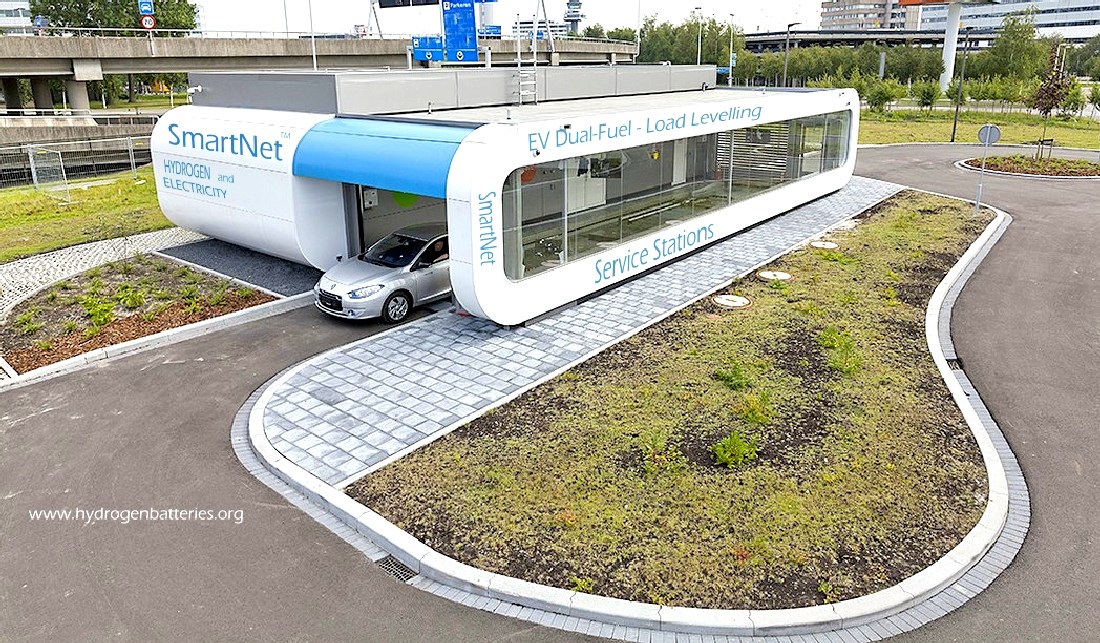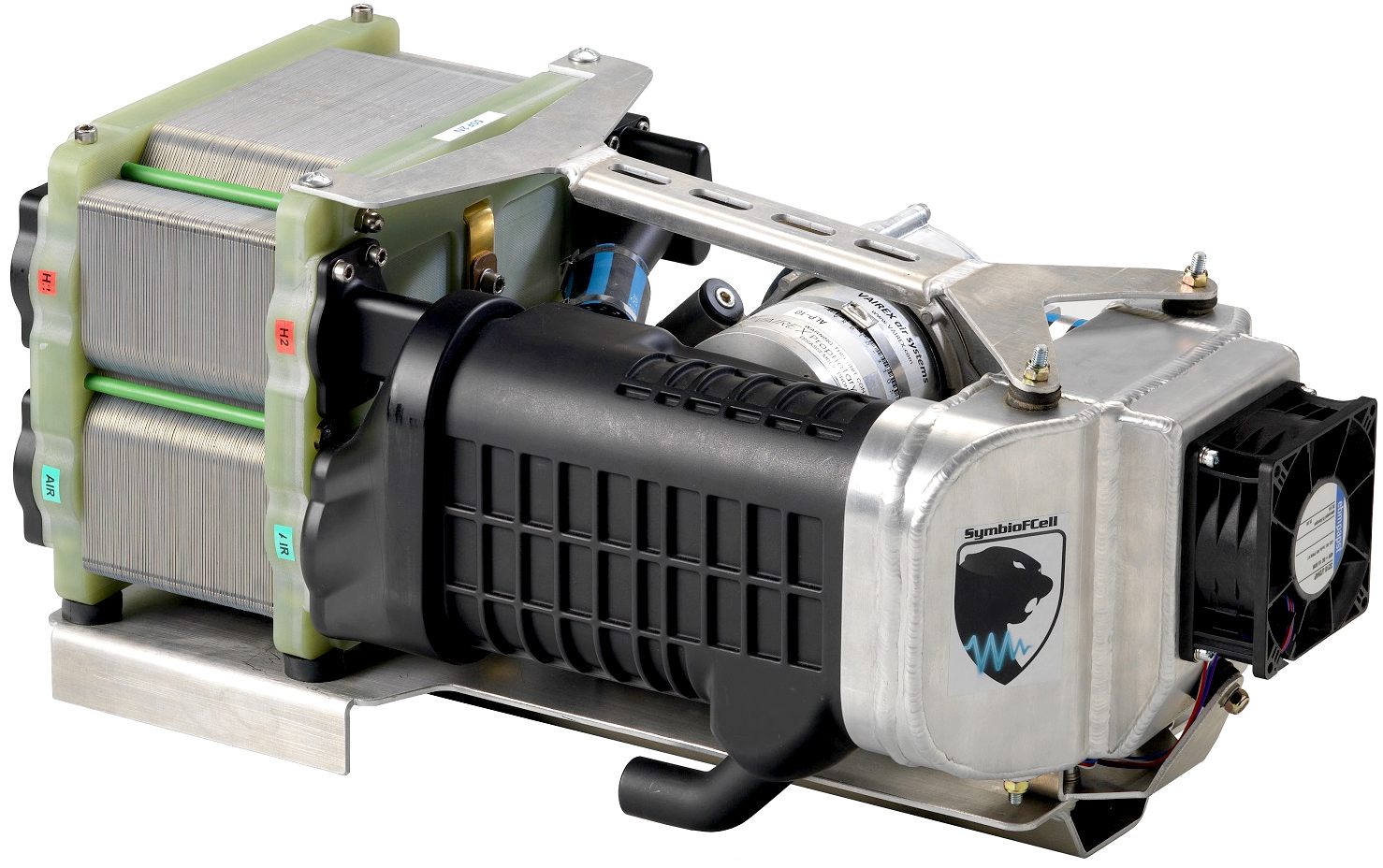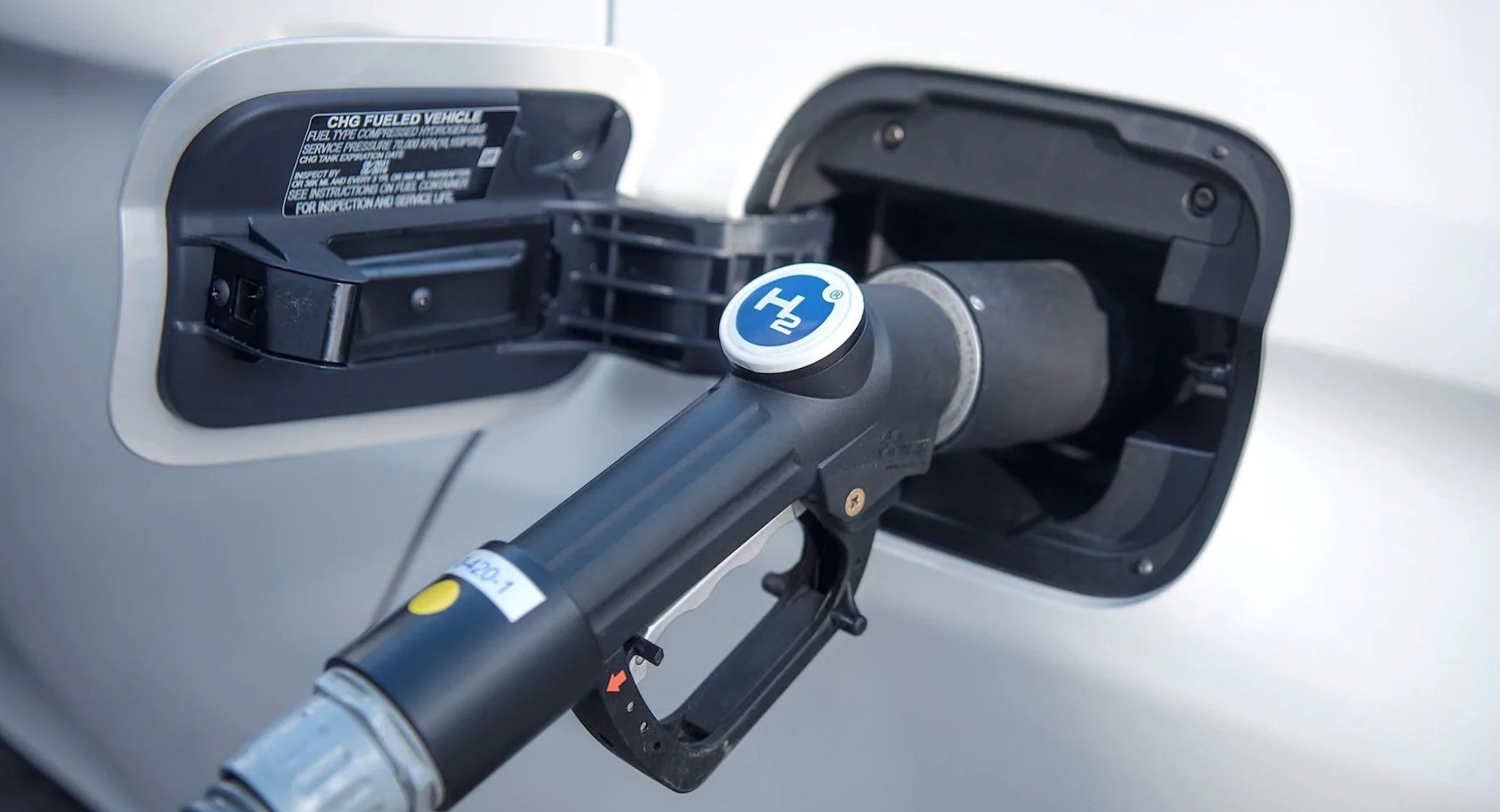|

Imagine
a means to store electricity as green hydrogen for the load levelling of
national grids, while also supplying energy for commercial vans and heavy
duty trucks. Fuel cells provide a way to convert hydrogen gas into
electricity, but on their own they do not represent a solution. The way
forward is with hydrogen batteries, as the beating heart of the Smartnet™
dual-fuel infrastructure.
One
call in the pipeline in draft form, that appears to be looking for a
versatile SmartNet™
category of solution is seen below.
HORIZON-CL5-2021-D5-01-03:
Smart EV Charging and V2G flexibility
Opening: 15 April
2021 Deadline: 7 September
2021
The EU estimates that an EU contribution of between EUR 7.00 and 10.00 million would allow these outcomes to be addressed
appropriately. Nonetheless, this does not preclude submission and selection of a proposal requesting different amounts. Indicative budget The total indicative budget for the topic is EUR 25.00 million. Type of Action: Research and Innovation Actions Technology Readiness Level: Activities are expected to achieve TRL 5-7 by the end of the project –
see General Annex B.
Expected Outcome: Projects’ results are expected to contribute to all of the following expected
outcomes: • Definition of the optimal smart charging concepts able to cope with several million of
Electric Vehicles (EV) deployed in different environments. • Development of smart charging strategies and control mechanisms that maximise the EV
drivers’ satisfaction and the efficiency of the whole energy system, increasing the use of
renewable electricity energy sources harnessing unused EV storage capacity, whilst
minimising grid reinforcements and energy generation needs. • Innovative concepts and technologies performances to create affordable, user-friendly
smart and bidirectional (V2X) charging solutions, co-optimising the needs of EV users, of
the house/building and of the supplying grid. Horizon Europe - Work Programme 2021-2022
Climate, Energy and Mobility Part 8 - Page 293 of 449 • A better understanding of the operational and economic impact on the vehicle and on the
charging (e.g. installation cost, battery damage/degradation) infrastructure of smart and
bidirectional (V2G) charging approaches and technologies (for instance AC vs DC),
including the value of any battery damage/degradation penalty as well as the overall costs
for the different actors involved. • Contribution to the integrated planning process of systems aimed at exploiting cross-sector
mutual benefits (G2X and V2X). • Assess customer expectations and implement an open architecture concerning smart and
bidirectional charging solutions, as key success factors to build a mutually beneficial
charging experience for the user and for the grid. • Demonstrate V2X potential in encouraging renewable energy growth through the
integration with low power renewable energy sources (e.g. photovoltaics on the roof or in
parking lots), by reducing energy exchange with the grid (in both directions) by 50%.
Scope: Digitally controlled charging solutions represent a fundamental building block of a full
and effective shift to electromobility. When scaled to a mass-market-level, current
technological features, such as ‘plug-&-charge’, could contribute to create an extra burden on
the power system. Mass availability of battery storage, provided by parked EVs (both light and
heavy-duty vehicles) can however be turned into a clear upside if an integrated approach is
adopted considering the different charging scenarios (public charging, home charging, depot
charging, etc.). Moreover, the effective exploitation of EV charging flexibility can minimise
investments in the electric grids, resulting in reduced system charges for the network users.
Proposals are expected to address all the following: • Improve the whole user experience (localization, booking, payment and billing process)
when charging EVs under different scenarios (on street and in personal parking, in
company and public buildings, etc.) and considering different electric vehicle fleets
(passenger cars, light and medium commercial duty vehicles). The quantity and quality of
drivers’ needs (e.g. range anxiety, duration and preferred time slot for charging,
acceptance of incomplete charge levels), the conditions for allowing a shared control of
battery State-of-Charge, and the availability to commit to vehicle utilisation limitations
(rewards & penalties) have to be considered as a starting point for designing smart and
bidirectional charging solutions; integration and control solutions should also be
considered, in view of achieving the best customer acceptance. • Consider current slow/medium power charging, analyse and develop and demonstrate
lower cost alternatives, appropriate for the mass deployment of V2X (X can be G for Grid,
H for Home and B for..) slow charging, considering both AC and DC solutions, related
costs and issues (for instance power quality of AC systems), in view of optimising the cost
of on-vehicle and infrastructure-side electronics. Horizon Europe - Work Programme 2021-2022
Climate, Energy and Mobility Part 8 - Page 294 of 449 • Complementing previous bullet innovative scalable solutions for large parking areas and
urban, on-road parking in smart cities, e.g. from a suitable central power system with
multiple outputs vs individual distributed low power chargers, are expected to be
considered and developed and validated. • Performing fast charging can be an alternative to a pervasive low power charging network.
These concepts are expected to be analysed and the respective pros and cons defined,
including the impact on the grid of a large number of fast chargers adequately spread in
the urban environment (considering the potential of local storage), with a view to
providing authorities with a complete perspective of the optimal infrastructure depending
on local conditions. • In order to define optimal charging concept/strategies, trade-offs are expected to be
performed in different EV penetration scenarios with a view to defining the optimal
balance between the vehicle and infrastructure costs, the location and typology of charging
infrastructures, and its interoperability whilst demonstrating the efficiency of V2X
centralized and decentralized scenarios and catering for different EV categories, in
different environments. The following alternatives are expected to be considered: public
(including on-road and covered parking), private (residential and office buildings), in
cities with high or low private parking availability, for light and heavy duty vehicles, in
cities or countries with monophase and triphase systems, integration with personal (V2H)
or business power generation (V2B), participation to grid service markets (V2G),
aggregation with other consumer/prosumer facilities, behind-the-meter energy
optimisation for prosumers. • A final assessment of the conditions in which full V2X functionalities are needed and
beneficial, and where simple V1G charge control is sufficient, are expected to be
performed. • Defining optimal charging concept/strategies through the development of smart charging
processes and data models, considering current international and European standardisation
activities, minimising EV driver’s costs by rewarding their charging/discharging
flexibility via effectively exploiting the storing capabilities of EVs both in a planned way
(charging in low cost/generation surplus time slots) and considering contingencies (fast
response in balancing grids flows fluctuations). AI-driven energy management schemes
are expected to be developed, including their market and regulatory frameworks (dynamic
tariffs criteria and focused incentives), to be tested preferably through regulatory
sandboxes. In this respect, the communication requirements among the energy actors are
expected to be evaluated, promoting the interoperability (preferably at European level)
between the proposed solutions. • Clear framework for use of the necessary personal data and data portability generated by
the natural persons making use of vehicle infrastructure pair should be investigated
thoroughly in line with the General Data Protection Regulation. Horizon Europe - Work Programme 2021-2022
Climate, Energy and Mobility Part 8 - Page 295 of 449 • Quantitative parametric and probabilistic models for assessing the impact of progressive,
massive EV penetration on the electricity system are expected to also be established: these
should consider modifications of hourly/weekly load profiles, conditions for energy
adequacy (primary energy supply) and power adequacy (grid congestions/reinforcements). • The impact of the different bidirectional charging profiles on the life of the EV battery and
power electronics are expected to be quantified, used to define the damage cost and,
therefore, the right level of incentives for the users in allowing their battery to be used. • In order to achieve a seamless smart charging experience for the EV driver, the
connectivity and interoperability between the vehicle and the different players in the EV
charging ecosystem, including charging point operators (CPOs), electromobility service
providers (EMSPs), roaming platforms and distribution system operators (DSOs), together
with access to all the necessary data to facilitate this objective, should be considered. This
should help in creating an integrated mobility system, assisting drivers and passengers to
take optimal decisions in selecting the charging points and overall trip planning, in terms
of cost, waiting time, and the extra services provided to drivers and to vehicles. • The relevant data collection, exchange and management for smart and bidirectional
charging are expected to be assessed, with a focus on the required in-vehicle data types
(especially in relation to the battery management system) which are indispensable to
operationalise these new charging technologies. Additionally, communication protocols
and user interfaces (including the need for new/updated standards) are expected to be
assessed and developed as needed in line with the work carried out by international and
European standardisation organisation. This topic implements the co-programmed European Partnership on ‘Towards zero emission
road transport’ (2ZERO).

• HORIZON-CL5-2021-D2-01-08: Emerging technologies for a climate neutral Europe •
HORIZON-CL5-2021-D3-01-05: Energy Sector Integration: Integrating and combining energy systems to a cost-optimised and flexible energy system of systems
• HORIZON-CL5-2021-D5-01-01: Nextgen
vehicles
• HORIZON-CL5-2021-D5-01-03: System approach to achieve optimised Smart EV Charging and V2G flexibility in mass-deployment conditions (2ZERO)
•
HORIZON-CL5-2021-D6-01-06: Framework for better coordination of large-scale demonstration pilots in Europe and EU-wide knowledge base
(CCAM Partnership) • HORIZON-CL5-2021-D6-01-08: New delivery methods and business/operating models to green the last mile and optimise road transport • HORIZON-CL5-2022-D2-01-05: Next generation technologies for High-performance and
safe-by-design battery systems for transport and mobile applications (Batteries
Partnership) • HORIZON-CL5-2022-D2-01-08: Coordination of large-scale initiative on future battery
technologies (Batteries Partnership) • HORIZON-CL5-2022-D2-01-11: CIVITAS 2030 – Coordination and support for EU
funded urban mobility innovation If anyone wants to form a
consortium for an application (as lead perhaps) we'd be more than pleased
to contribute the IP
and flat-pack
designs and specifications by way of a study (RIA) Research and Innovation
Action. We'd need a gas production
concern and a utility. If commercial EV OEM car, van or truck makers joined, that would make a
very solid consortium, though not essential, as the proposed Smartnet™
system is dual fuel, as well as load levelling - an international hydrogen
and electricity supply network in concept, looking to be proven by way of
simulation, and eventually, prototype testing.

LINKS
& REFERENCE https://www.enlit-europe.com/news-grids/measuring-the-performance-of-europes-smart-grids
Please
use our A-Z
INDEX to navigate this site
Copyright © Climate Change Trust
& Universal Smart Batteries 2021. Solar
Studios, BN271RF, United Kingdom.
| 

